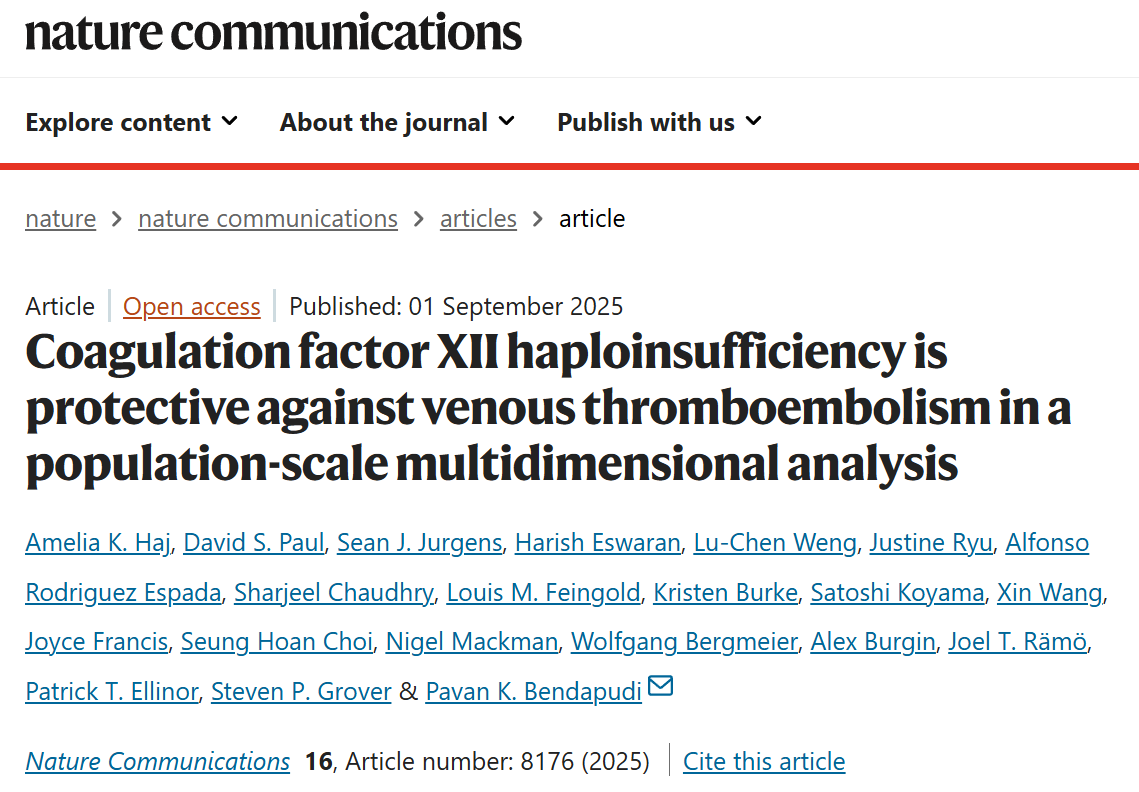
Steven Grover: Germline Heterozygous Loss of Function in FXII is Associated with a Significantly Reduced Risk of Venous Thromboembolism
Steven Grover, Staff Scientist II at Beth Israel Deaconess Medical Center, shared on LinkedIn:
“Evidence for a role of coagulation factor FXII in the pathogenesis of venous thromboembolism has proven elusive to date. In work led by Amelia Haj from Tem Bendapudi‘s group we show that germline heterozygous loss of function in FXII is associated with a significantly reduced risk of venous thromboembolism. A 50% reduction in plasma FXII levels, although unremarkable in the classical activated partial thromboplastin time assay, is sufficient to significantly reduce plasma thrombin generation by calibrated automated thrombography and venous thrombosis in a preclinical model.
Delighted to have been involved in this important work alongside several researchers from the Blood Research Center at UNC, Beth Israel Deaconess Medical Center and Massachusetts General Hospital.”
Title: Coagulation factor XII haploinsufficiency is protective against venous thromboembolism in a population-scale multidimensional analysis
Authors: Amelia K. Haj, David S. Paul, Sean J. Jurgens, Harish Eswaran, Lu-Chen Weng, Justine Ryu, Alfonso Rodriguez Espada, Sharjeel Chaudhry, Louis M. Feingold, Kristen Burke, Satoshi Koyama, Xin Wang, Joyce Francis, Seung Hoan Choi, Nigel Mackman, Wolfgang Bergmeier, Alex Burgin, Joel T. Rämö, Patrick T. Ellinor, Steven P. Grover & Pavan K. Bendapudi

The paper is out now in Springer Nature journal Nature Communications, read it here.
Stay informed with Hemostasis Today.
-
Dec 17, 2025, 15:24Laura Dormer on a Motor Relearning Program for Chronic Stroke Patients
-
Dec 17, 2025, 15:01WSO: United Nations Has Formally Adopted the Political Declaration on NCDs and Mental Health
-
Dec 17, 2025, 14:44Bryan Unger: 1st Patient Has Been Enrolled in NuvOx Therapeutics’ Phase IIb NOVEL Trial
-
Dec 17, 2025, 14:29Sarah Richardson: Feeling So Proud to Be a Part of the Advocacy Team for the HFA
-
Dec 17, 2025, 06:28Wolfgang Miesbach on Linus Völker’s Presentation of Caplacizumab as Frontline Therapy for iTTP
-
Dec 17, 2025, 06:11Lisa Murphy Thanks Stroke Foundation Team for An Impactful, Rewarding and Incredible Year
-
Dec 17, 2025, 06:05Emmanuel J Favaloro Shares A Study on AI and Machine Learning in Thrombosis and Hemostasis
-
Dec 17, 2025, 05:54Michael Bruckman: Fantastic to See Platelet-Inspired Nanoparticles Gaining Attention!
-
Dec 17, 2025, 04:00Peter Verhamme on Genetic Predisposition to Thromboembolism and COVID
